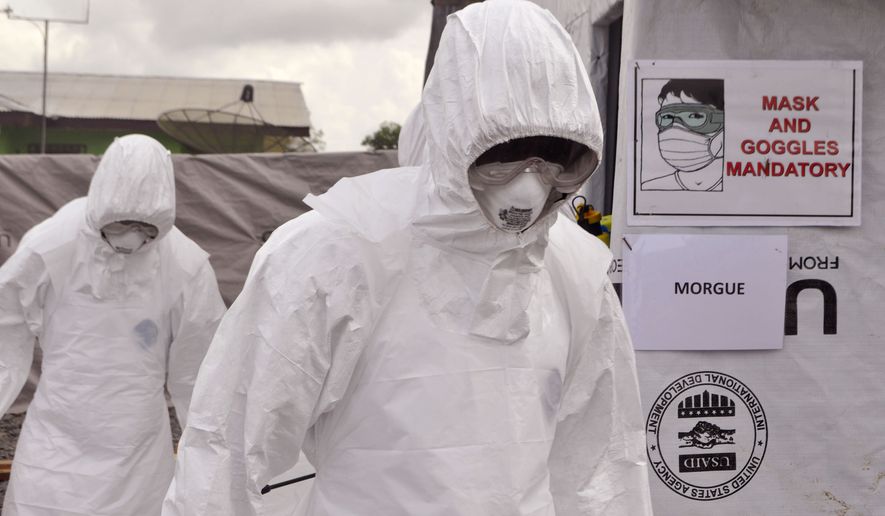Hoping to tamp down fears about Ebola, the Obama administration said Monday the virus wreaking havoc in West Africa is unlikely to mutate and spread by air.
The Centers for Disease Control and Prevention released a fact sheet that says samples from the current outbreak, which has killed about 5,000 abroad and elicited fear in the U.S., are nearly identical — 97 percent the same — as the strains studied when Ebola was discovered in 1976.
Scientists monitoring the virus have not seen any evidence that Ebola may be mutating in a way that would make it spread more easily, the CDC said, and changes resulting in new forms of transmission would require multiple mutations over a very long period, anyway.
“As if Ebola isn’t a scary enough disease, some people have wondered whether or not Ebola could mutate and become airborne,” the CDC fact sheet says. “Has it become or could it become an even scarier, more deadly, and more easily spread super-bug?
“No. Scientists have not seen any evidence to suggest that the Ebola virus may be mutating to become more contagious or more easily spread.”
For months, leading scientists have advised Congress and the public that Ebola is spread through direct contact with an infected person’s bodily fluids.
SEE ALSO: Obama would veto effort to block immigration action: White House
Dr. Tom Frieden, director of the Centers for Disease Control and Prevention, stressed that point several times before Congress after a case reach the U.S. in late September.
“We don’t believe it is spreading in any other way,” he told the House Energy and Commerce Committee in mid-October. “We are confident this is not airborne transmission.”
Transmission by air would undoubtedly cause panic, particularly among people wary of air travel or other means of public transportation because of Ebola.
Scientists who studied the “Reston” strain of Ebola after a 1989 outbreak among lab monkeys outside Washington, D.C., found that, under conditions later created in a lab, the strain could go airborne. However, that strain was only harmful to monkeys, not humans.
The researchers told The Washington Times in October that while airborne transmission of the current strain cannot be ruled out entirely, it is highly unlikely and there is no evidence the virus can “hang in the air” for long periods.
Rather, they said they are more concerned about the “droplet hazard,” such as when someone next to you sneezes and you feel a drop of fluid.
So far, only two people have contracted Ebola within the U.S. — a pair of Dallas nurses who treated Thomas Eric Duncan, the Liberian national who brought Ebola to Texas and later died. Both nurses were treated and cured.
One of the nurses traveled on a commercial airline between Texas and Ohio before she tested positive for the virus, renewing concerns about how the disease spreads.
Since then, the CDC has issued specific guidance on how to assess air passengers for Ebola infection, and states have established quarantine and monitoring rules for people who were exposed to infected patients.
• Tom Howell Jr. can be reached at thowell@washingtontimes.com.




Please read our comment policy before commenting.